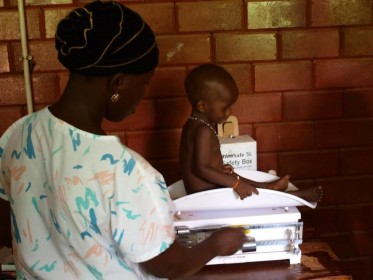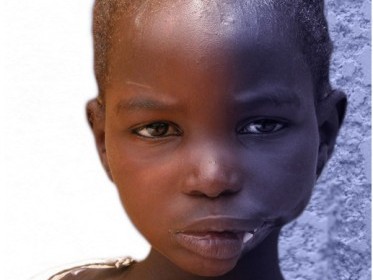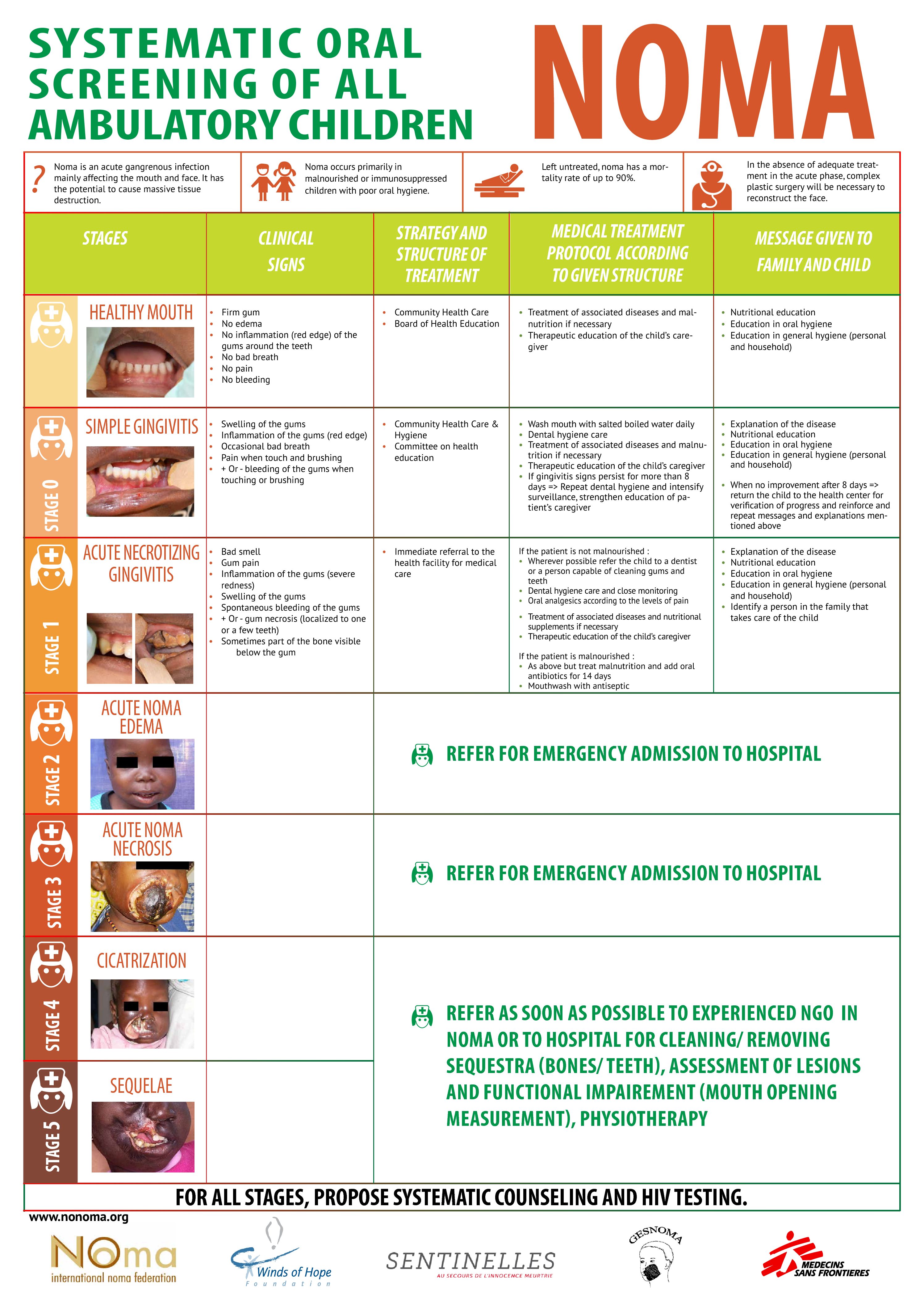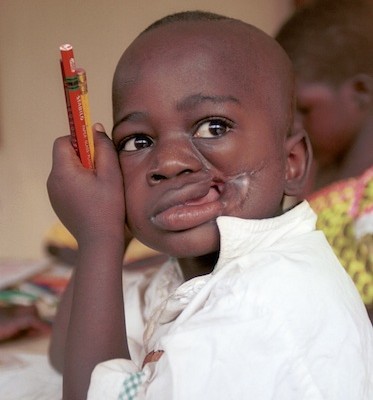- c/o Winds of Hope Foundation, Ch. de Montolivet 19, 1006 Lausanne, Suisse
- +41 (0)21 320 77 22
- info@nonoma.org
« The children martyred by noma, that lightning-fast scourge that devours beauty and life ... » Edmond Kaiser
Description
Noma, from the Greek “nomein” (devour), is a devastating gangrene that develops in the mouth, starting with a benign lesion and eventually ravaging the face atrociously. Starting as a gingivitis that becomes ulcero-necrotic, it advances into an edema of the cheek that can pass unnoticed. The infection then spreads in just a few days before becoming irreversible, and destroying the soft and bony tissues of the face and profoundly disfiguring its victims, who are mainly young children aged between 2 and 6. 80% to 90% of them die amid total indifference. As for the survivors, they will never again be able to speak, eat or breathe normally. In addition, they will often be stigmatized or rejected by their communities, who view them as manifestations of a curse.
Noma is not a contagious disease and is not associated with any virus or bacteria. Its emergence is favored by a combination of several factors: lack of hygiene, particularly oral hygiene; qualitative and quantitative malnutrition; lack of primary care; and an immune system weakened by an infectious or parasitic disease such as measles, scarlet fever, malaria or AIDS.
Significant aggravating factors are the precarious living conditions typical of extremely poor countries, such as: poor access to safe drinking water and primary health care; the breastfeeding problems encountered by malnourished mothers; the proximity of livestock to living quarters and the resulting lack of hygiene; ignorance about the disease; and the strength of superstitions and traditional beliefs which consider noma to be a curse rather than a curable disease.
.


The epicenter of this disease lies in Sub-Saharan Africa, the poorest region on the continent. There is a lack of knowledge about the exact etiology and magnitude of the phenomenon. It appears to be caused by a deficiency in the immune system resulting from malnutrition and, according to the WHO, it affects thousands of children aged between 2 and 6 each year. Epidemiological estimates are currently being developed, but there are many obstacles, such as: isolated and inaccessible places; inadequate health services; no systematic recording of cases or manipulation of data by the authorities; extremely high mortality; hidden victims…
Developed countries have also experienced noma, the last cases in Europe going back nearly 70 years, to a time when certain European countries were very weakened by war and poverty.
Noma can strike any community where there is extreme poverty and malnutrition. This is why it is called «the face of poverty».
Even in countries where no famines occur, there are malnourished children. They may lack protein, vitamins or iron and, as a result, have difficulty withstanding attacks of malaria and diarrhea, which can rapidly weaken a child.
For more information, you can read these articles: :
Noma : an « infectious » disease of unknown aetiology - Noma (cancrum oris)

Developmental stages
The first signs of noma are: • Small, very painful sores in the cheeks or gums that can bleed (ulcerative-necrotic gingivitis), • bad breath, • fever, • loss of appetite.
It is now that the child needs to be treated in order to avoid the worst …
At this stage, disinfectant mouthwashes, vitamin replenishment and antibiotic treatment would stop the disease if health centers, community health workers and traditional healers had the necessary knowledge.
Without this treatment, the child becomes feverish, with loss of appetite and weakened natural defenses. The child becomes more and more fragile as the disease progresses. Noma develops in a few days and forms an edema in the mouth or cheeks, which soften and then blister.
It is a medical emergency, and the child must be given antibiotic treatment as quickly as possible to prevent irreversible damage …


Otherwise, everything happens very quickly. Dark blisters will appear on the flesh, which begins to decompose. The necrosis destroys the flesh and the bony parts in just a few days. The child’s jaws lock in a closed position, preventing him from eating, and many respiratory disorders occur. A gangrenous plaque forms, which when it drops off leaves a gaping hole in the face.
This is the end of the acute phase of the disease. At this stage, the only option left is restorative surgery. In the absence of treatment, the child will die in 90% of cases, often leaving no trace …
The survivors, disfigured for life, have sequelae such that they will never again be able to eat, talk or breathe normally. As with leprosy, victims are often rejected by their own communities.
Consequences

The physical, psychological and social consequences are all dramatic :
- Vital functions damaged : As the disease advances, the jaws become locked. The victims gradually lose the use of their mouth. Feeding, breathing and seeing become difficult as the infection progresses and attacks the nose and sometimes the eyes.
- Death : The outcome in 70 to 90% of cases who receive no treatment, as a result of infection and / or hunger, giving their inability to feed themselves..
- Disfigurement of the survivors : The disease causes a progressive, often atrocious disfigurement of the face, caused by scar retractions. Children suffering from noma have their faces eaten away, their jaws locked in position, their eyes often affected.
- Rejection by their relatives : As with leprosy victims, those afflicted by this rapidly-developing disease are sometimes rejected by their own communities and abandoned to their fate in the bush. Their condition is viewed as a curse on the family and the village.

